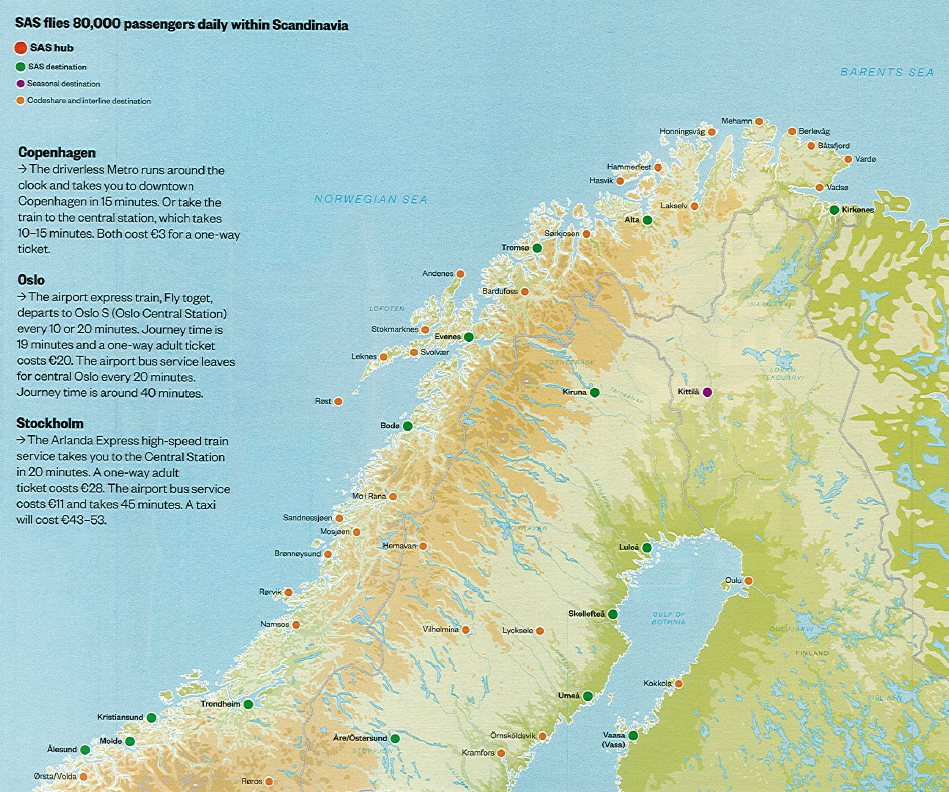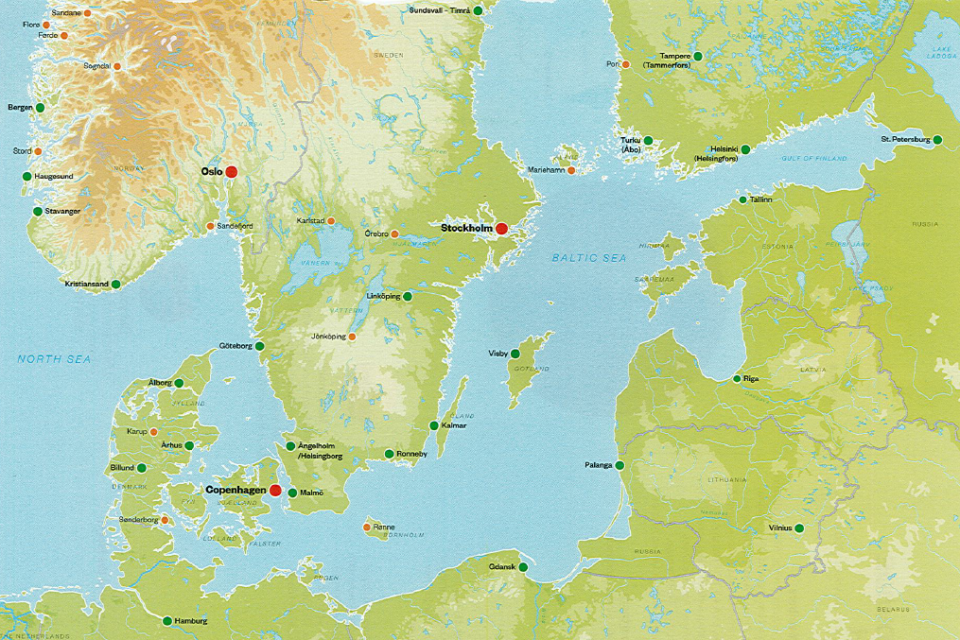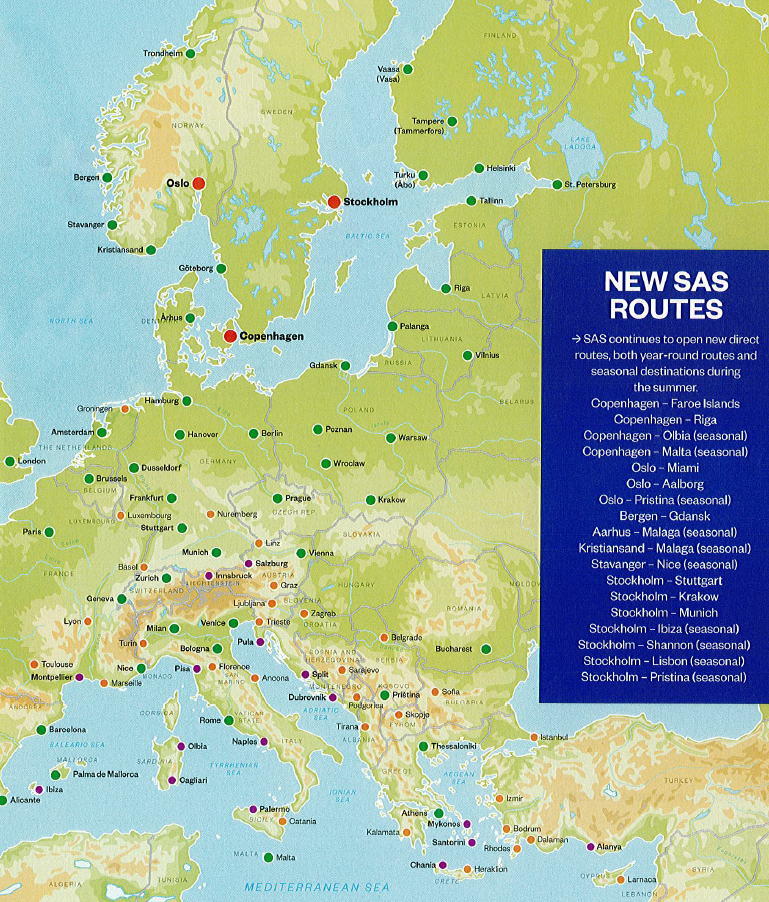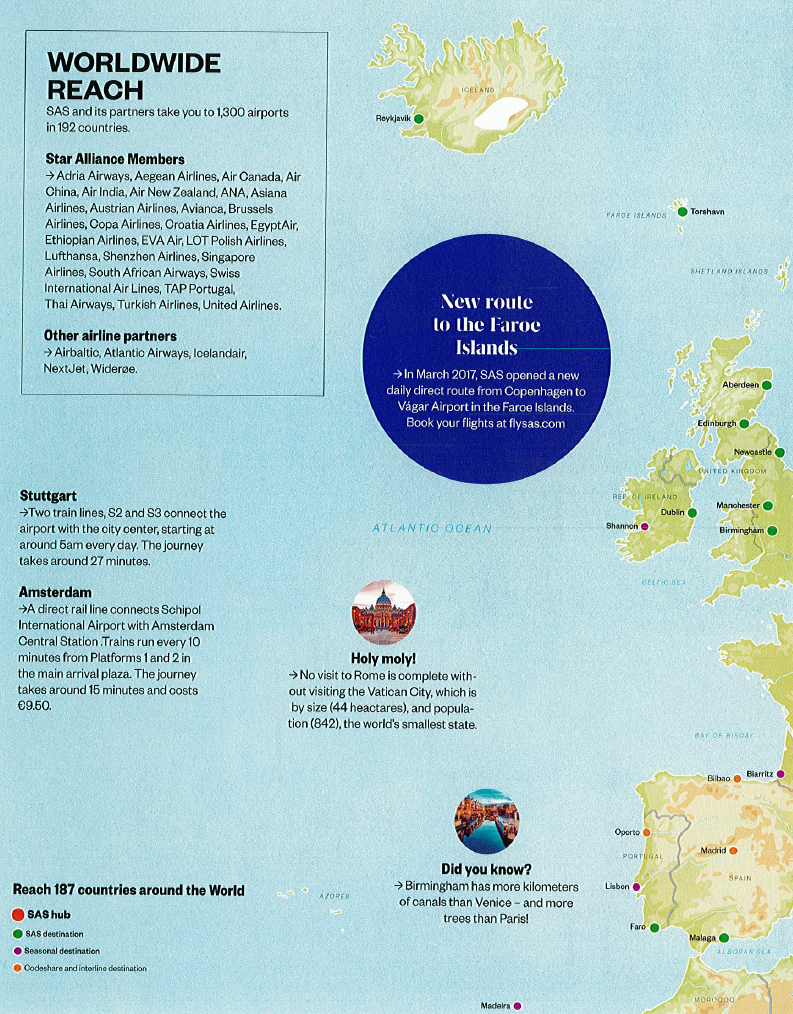Scandinavian Airlines, often referred to as “SAS” for its former name, “Scandinavian Airlines System,” is a unique airline in that it has three hubs in Northern Europe: Copenhagen (the largest), Stockholm and Oslo. Effectively, SAS is the second “official” network and flag carrier of the Nordic region along with Finnair. The only difference is that Finnair’s operations are consolidated within one country (Finland) and one hub (Helsinki) whereas SAS is the flag carrier of Denmark, Sweden, and Norway.
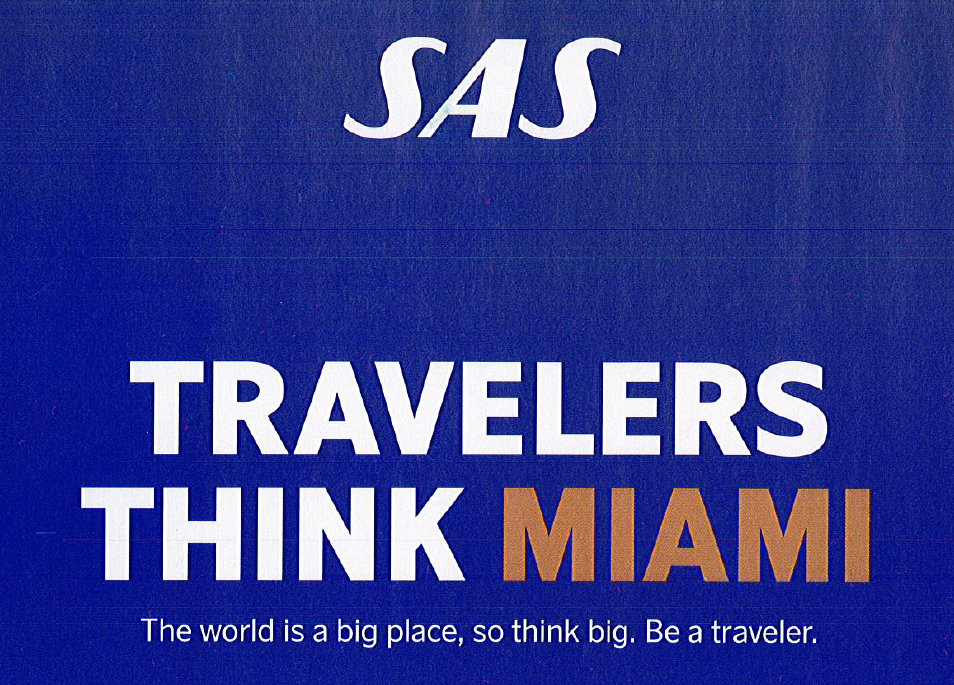
Of course, the looming threat in the corner has been — and will continue to be — Norwegian Air Shuttle (short-haul) and Norwegian Air International (the long-haul arm).
Finnair is much larger in Asia over SAS, but SAS is much larger in the U.S. over Finnair. SAS has struggled with a high-cost base and the challenges of splitting hub operations between three airports. In Asia, Finnair flies to New Delhi, Bangkok, Singapore, Hong Kong, Guangzhou, Chongqing, Xi’an, Beijing, Shanghai, Seoul, Osaka, Nagoya and Tokyo Narita, and seasonally to Ho Chi Minh City, Goa, and Fukuoka. SAS, in contrast, only flies to Tokyo Narita, Beijing, Shanghai and Hong Kong.
In the U.S., however, SAS flies to Newark, Boston, Washington Dulles, Chicago, Miami, Los Angeles and San Francisco. Finnair, conversely, only flies to New York year-round and operates seasonal service to Chicago, Miami, and San Francisco.
Worth noting, however, is how SAS operates several “niche” long-haul routes that do not all operate from the same hub. In other words, up until the late 2000’s, virtually all of SAS long-haul originated and terminated in Copenhagen, its largest hub. Now, it is common to see routes like Los Angeles – Stockholm more frequently, which is a deviation from its prior strategy. It also previously operated a route from Stavanger to Houston which ran from 2014 to 2015, but was cancelled after the drop in oil prices caused a downturn in premium traffic on oil routes. It was operated on a Privatair all-business class configured 737.
SAS is over 70 years old and once operated intercontinental routes to markets around the world. Noteworthy markets that have been suspended include Amman, Bangkok, Baghdad, Beirut, Buenos Aires, Cairo, Campinas, Colombo, Damascus, Delhi, Dubai, Houston, Jeddah, Johannesburg, Kangerlussuaq, Karachi, Kolkata, Kuwait City, Manila, Montreal, Nagoya, Nairobi, New York JFK, Osaka, Santiago, Sao Paulo, Singapore, Tehran, Tel Aviv, Toronto,
SAS Long-haul routes:
USA:
Copenhagen – San Francisco, Boston, Newark, Miami, Chicago O’Hare, Washington
Stockholm – Chicago O’Hare, Los Angeles and Newark (+Miami effective October 2017)
Oslo – Newark, Miami
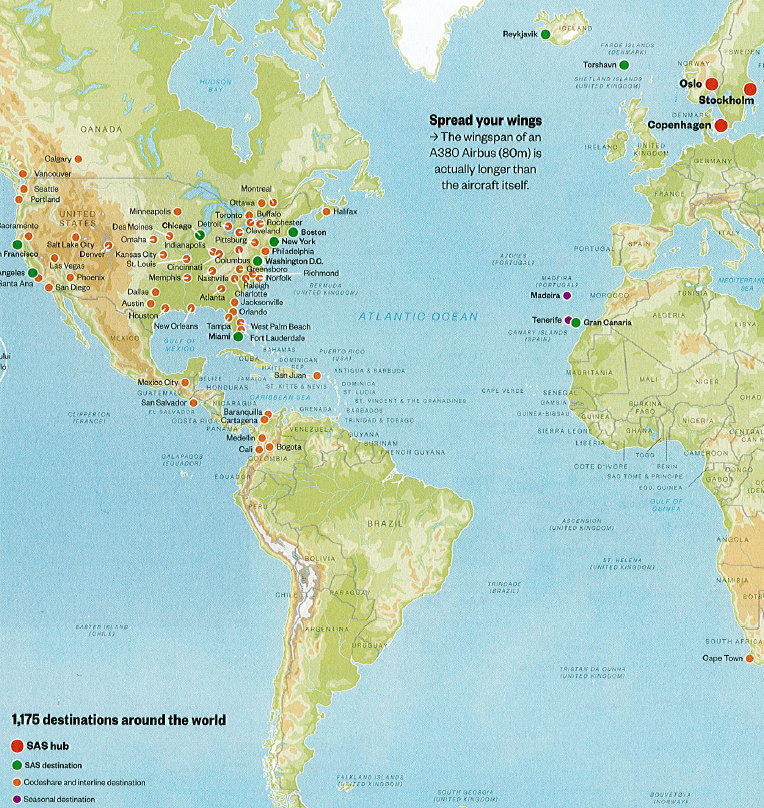
ASIA:
Copenhagen – Beijing, Shanghai, and Tokyo
Stockholm – Hong Kong
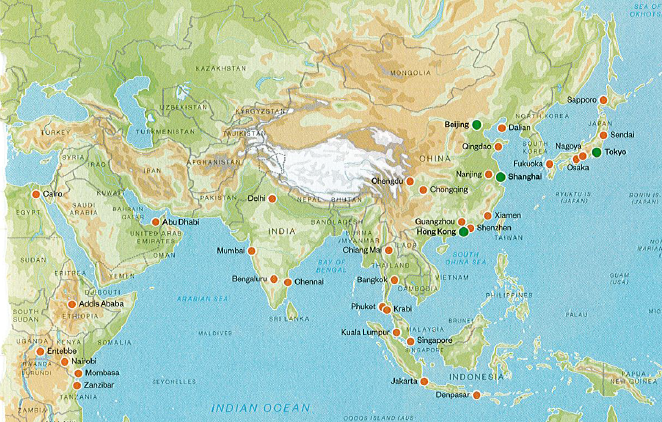
Per its website, Copenhagen serves 56 SAS destinations nonstop, Stockholm 45 destinations and Oslo 31 destinations. Combined, the three airports handle over 60 million passengers each year.
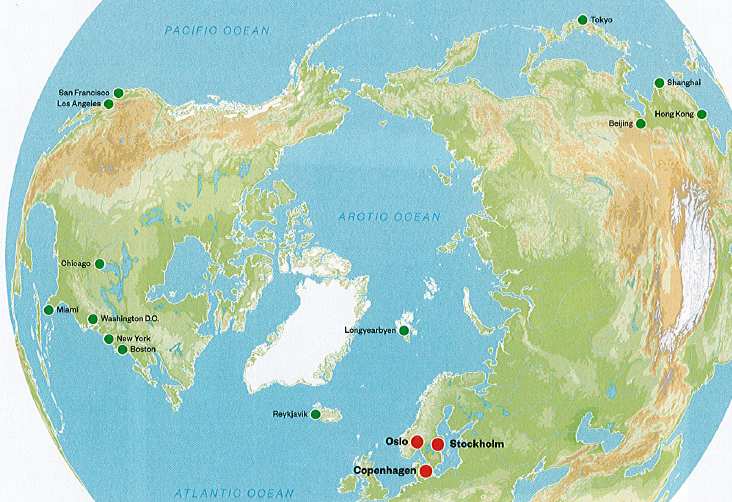
SAS Short-Haul and European Markets
Fleet
SAS currently has 205 planes in its fleet, with 160 in service, 28 on order, and 17 on option. The average age of its fleet is 10.59 years.
Narrowbody planes comprise the bulk of its fleet, with 75 737-Next Gens in service. Interestingly, a substantial portion of these is the rare 737-600 variant, while the others are the more common 737-700 and 800. There are 27 Airbus A320 family aircraft as well, with 19 NEOs on order and a further 11 on option. It’s 8 Airbus A321s are the second oldest aircraft in the fleet at 15.37 years. It’s 8 Airbus A340-300s are the oldest at 16.36 years, and its 8 Airbus A330-300s are half of that age at 8.19 years. The carrier has 8 Airbus A350-900 XWBs on order with a further 6 on option. The first will join the fleet sometime in 2019/2020.
Finally, SAS has 24 CRJ-900s and 11 ATR-72s.
Among its long-haul network, SAS operates the Airbus A330-300, which offers 32 seats in Business, 174 seats in Economy and 56 in SAS Plus (Premium Economy). Its Airbus A340-300 40 seats in Business, 179 seats in Economy and 56 in SAS Plus. As such, the Airbus A330-300 is a higher-density plane with a larger number of Economy class seats, but nearly double the amount of “plus” seats for premium economy passengers.
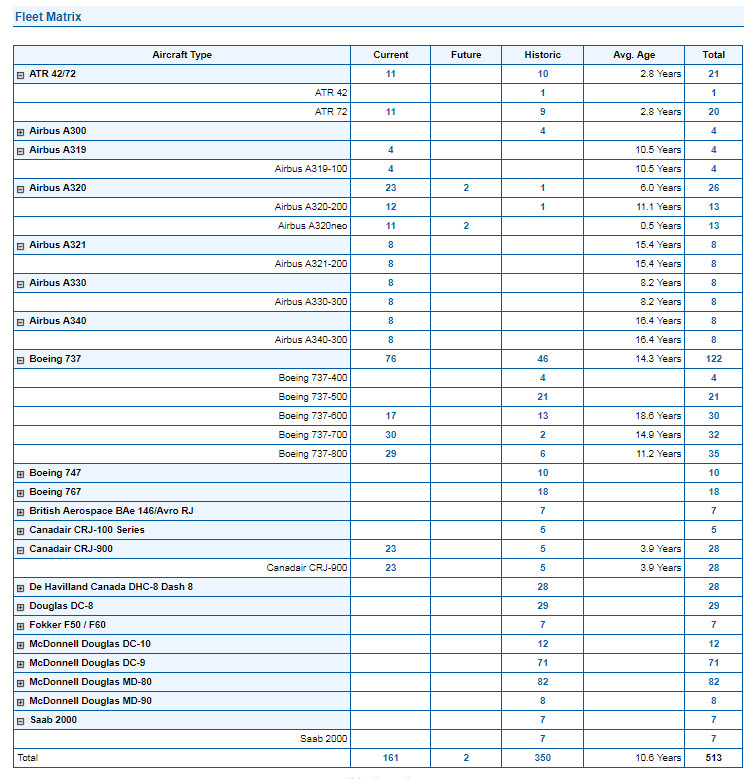
The A333 is flown between the following markets:
- Stockholm to Newark, Miami, Chicago, Los Angeles and Hong Kong
- Copenhagen to Boston, Miami, Newark, and Washington
- Oslo to Newark
The A343 is flown between the following markets:
- Copenhagen to Boston, Beijing, Chicago, Miami, Tokyo, Shanghai, San Francisco, and Washington
- Oslo to Miami

